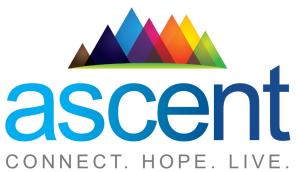When you hear about technology and addiction, it may bring up thoughts of zombified teenagers staring obsessively at their electronic devices. Smartphone addiction is real. But smartphones aren’t always the problem. Sometimes, smartphones can be a solution for addiction.
Although we haven’t found a way to virtualize addiction treatment plans completely, and maybe we never will, technology is playing a large role in recovery today.
Technology can be used to replicate human therapy programs that have been proven to work. The human element is still necessary, but when interactions can take place on a smartphone, you suddenly have access to treatment 24/7 from the comfort of your own home.
There are a few technologies showing promise in the world of recovery today.
Computer-Based Cognitive Behavioral Therapy (CBT)
Cognitive behavioral therapy (CBT) is a type of therapy used to talk through various issues and scenarios with the goal of changing the way you think and behave.
Researchers at Yale designed a computer-based CBT and applied it to a randomized control trial of cocaine-dependent patients on methadone maintenance.
A whopping 36 percent of patients in the who used the computer-based CBT were able to abstain from cocaine, while on 17 percent of people receiving typical treatment were able to abstain.
The program itself plays much like a game with interactive modules where the user can evaluate risky situations and determine the best course of action. It contains six modules based on a CBT manual that was previously used with success. The computer model introduces core concepts of CBT, such as patterns of substance abuse, handling cravings, problem-solving, identifying and changing thought patterns, improving decision-making skills and refusing offers of alcohol or drugs.
Online Addiction Programs
One study shows that an Internet-based behavioral intervention called Therapeutic Education System (TES) improved abstinence not only amongst patients who are in active recovery but also among patients who were actively using drugs at the start of the study. After three months, about 40 percent of TES patients who tested positive for drugs at the study entry achieved abstinence. The control group only had about a 26 percent abstinence rate.
The TES intervention package studied consists of 62 interactive multimedia modules that aim to increase positive reinforcement for not using drugs. This particular TES system uses the Community Reinforcement Approach. This cognitive behavioral intervention uses prize-based and other motivational incentives for non-drug using activities. TES modules also address relapse prevention among other things.
There are also programs like BetterHelp that connect you to online counselors. You can check out their free counseling options here.
Smartphone Apps
Smartphone apps are definitely the most easily accessible ways to use technology for recovery, but are they effective? A University of Wisconsin study set out to answer that question by using smartphone apps as aftercare for residential patients with alcohol use disorders. These patients are typically not offered comprehensive aftercare.
Researchers noted that only 1 in 4 patients maintain abstinence within the first year without comprehensive aftercare. To test the theory that an app can prove helpful in maintaining sobriety, researchers developed a smartphone program that offers emotional and therapeutic support around the clock. In that way, it was much like Ascent.
The program researchers developed included audio-guided relaxation and a dynamic component that can initiate an alert whenever the patient is nearing a high-risk area like a bar. The app’s alert would ask the user if she wants to be there.
At the four-month mark, the app showed an 8% improvement in abstinence over typical aftercare. This isn’t statistically significant, but over 12 months, the app showed a 12% advantage that is a major improvement over typical aftercare.
Anyone can use Ascent for any and all types of addictions. It can even be used by families working to help a loved one, and it can be used as an adjunct to therapy in treatment centers and other recovery organizations.
Conclusion
Technology has proven to be effective at treating addiction when used as an adjunct to traditional therapy. As we plan to move forward, we must understand that computer programs still have limitations. Skilled therapists can prove a warm connection that you will never get from a device, and that provides value to anyone in recovery. Still, no one can argue that technology is helping people recover from drug and alcohol addiction. We should continue to rely on user-friendly addiction-related programs that are designed to help people through some of the many challenges that recovering addicts face daily. In this world, we can use all the help we can get.
Guest post by Trevor McDonald
